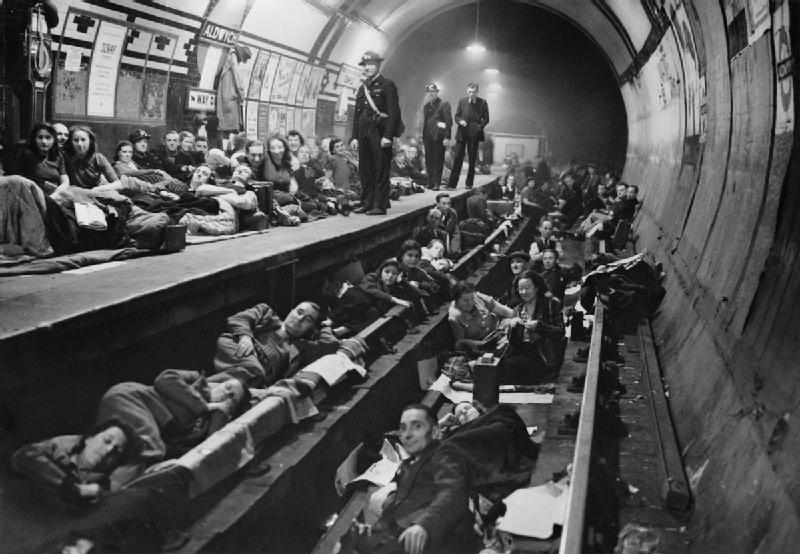When people think of London and war, they usually think of the Blitz, the German bombing campaign during World War II. However, as a capital city, London has known much more fighting, stretching back centuries since the founding of the city. While there is evidence of settlement in the London from as early as the Bronze Age, a lack of written history precludes us from knowing what armed conflict looked like in the area prior to the arrival of the Romans to Britain in 43 AD. This is where the story of war and the city begins.
What we know of as London was founded in 47 AD as a Roman settlement named Londinium. Unlike other Roman towns and forts that were often in captured Celtic settlements, the Romans were able to found the city without fighting any existing inhabitants. London wouldn’t see its first battle until about 60 AD when Boudicca led a revolt that spread to Londinium. Her rebels sacked the city, killing many of the inhabitants and then burning it to the ground. Following Boudicca’s defeat, the Romans returned to London and rebuilt it as a planned city. Another revolt by the Roman admiral Carausius saw the city sacked again by Carausius’s Frankish allies, but they were stopped on the Thames by a Roman flotilla in 296 AD.
By the 5th Century, the empire’s influence in London was waning, and the Anglo-Saxons gained control. London fell into the province of the Kingdom of the East Saxons (or Essex). The Anglo-Saxons originally settled in Ludenwic (now Aldwych), but was Viking invasions became more frequent, King Alfred the Great moved the population within the old Roman walls of London for greater protection. Viking raids on the city became frequent from 830 onwards, and there’s a period where historians believed London to be entirely under their control. Raids continued until the Viking leader Cnut the Great succeeded in becoming King of England.
The Vikings remained in control until Cnut’s Anglo-Saxon stepson, King Edward the Confession, succeeded Harthacnut. Edward’s death, however, would soon bring war back to London as a disputed succession led the Anglo-Saxon lords to proclaim Harold Godwinson as king despite evidence that Edward had chosen William, Duke of Normandy, as his heir. William promptly invaded England and defeated Harold at the Battle of Hastings in 1066. William then marched his Norman army toward London, which eventually submitted to him and where he was crowned king on December 25.
London would not see conflict again until the First Barons War against King John in 1216. Accused of having violated the Magna Carta, the barons rose up against John and forced him to evacuate the city. They asked Prince Louis France (later King Louis VIII) to rule over the city. However, this rebellion only lasted a year as the city promptly switched its allegiance to King Henry III following John’s death. Violence would rock the capital a century later during Wat Tyler’s Peasant Revolt in 1381, wherein the rebels executed several officials and burned multiple buildings, though the rebellion fell apart after Tyler was killed by Lord Mayor William Walworth.
The city was then spared the violence of war for another few centuries until the English Civil War broke out in 1642. Five Members of Parliament that King Charles I sought to arrest were given refuge in the city and London firmly sided with the Parliamentarians during the conflict. Charles won the Battle of Brentford, west of London, but London organized its own defenses, and the king decided not to attack. Royalist forces did not threaten the city again during the war. It would be nearly 300 years before another conflict would devastate London.
While many people only think of London’s bombing during World War II, they forget this tactic was also employed by the Germans in World War I. The first bombings on the city were conducted by zeppelins rather than planes or rockets, as they would being during the Blitz. The city was also rocked by the Silvertown munitions factory explosion in 1917, killing 71 and injuring another 400 people as well as causing extensive property damage. The Blitz during World War II covered some 71 bombing attacks by the Luftwaffe until May 1941 until British air superiority drove off the German air force. Later, the city would come under attack from German V1 and V2 rockets in 1944 and 1945 but stopped after Allied forces captured the launching sites. Following World War II, the Summer Olympics at Wembley Stadium in 1948 symbolized the peace brought to the world in its wake and an end to warfare in London.
War Comes to London – The City’s History of Armed Conflict — Londontopia — The Website for People Who Love London
Source: Londontopia



Комментариев нет:
Отправить комментарий